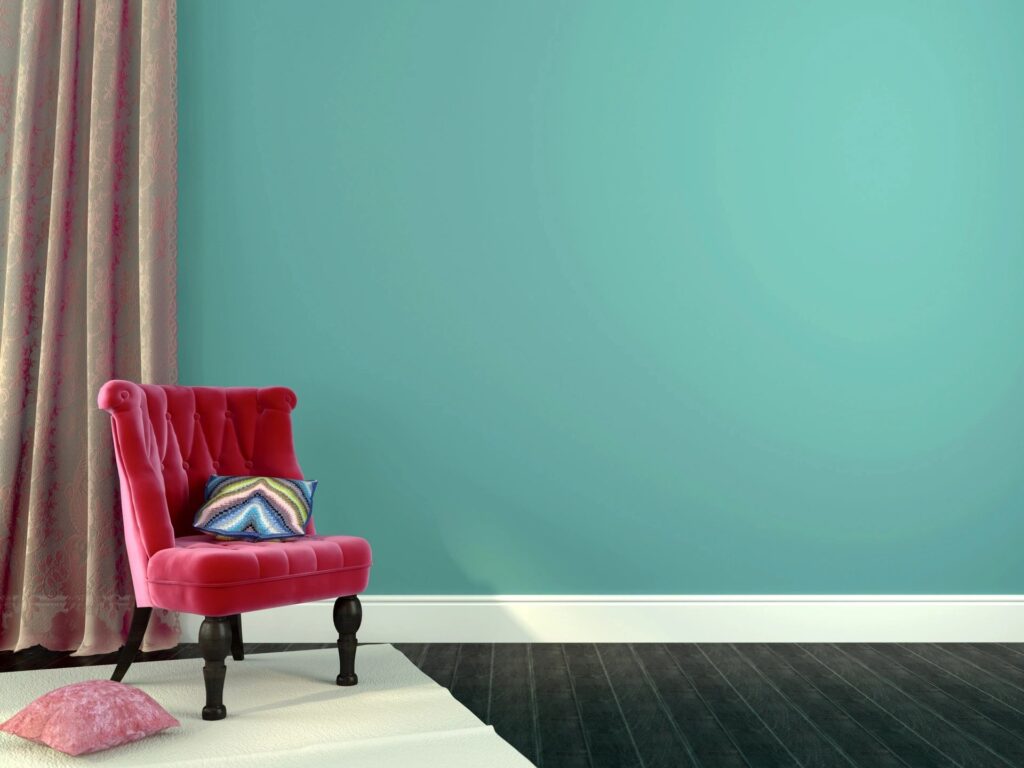When it comes to designing interior spaces, the use of colour is far more than just a visual choice; it’s a powerful tool that has the ability to evoke emotions, influence mood, and shape perceptions. The psychology of colour plays a vital role in interior design, as designers carefully select hues to create atmospheres that resonate with occupants on a deeply emotional level. In this blog, we’ll dive into the fascinating world of colour psychology in interior design and explore how different shades can transform spaces into havens of tranquility, energy, creativity, and more.

Understanding the Basics: How Colour Affects Emotions
Before delving into the specifics of colour psychology, it’s important to recognize that colours can evoke a wide range of emotions and psychological responses. Warm colors like reds, oranges, and yellows tend to stimulate and energize, while cool colours like blues, greens, and purples have a calming and soothing effect. Neutrals such as whites, grays, and browns often provide a sense of balance and can be used as a backdrop to accentuate other colours.

Creating Mood with Colour Choices
- Calming Retreats with Cool Colours: When designing spaces intended for relaxation and tranquility, such as bedrooms or meditation rooms, cool colours like soft blues and greens can work wonders. These hues promote a sense of serenity, reduce stress, and encourage a peaceful state of mind.
- Energizing Spaces with Warm Tones: Areas meant to be vibrant and dynamic, such as kitchens or social spaces, can benefit from warm colours like reds and oranges. These shades promote social interaction, stimulate appetite, and create a lively atmosphere.
- Balancing Act with Neutrals: Neutrals are often used as a canvas to tie together different colour schemes. They can evoke a sense of sophistication and timelessness while allowing other elements in the room, such as furniture and decor, to stand out.
Accentuating Emotions Through Colour Combinations
The psychology of colour is not solely universal; cultural and personal associations also play a significant role in how colours are perceived. For example, while white may symbolize purity and simplicity in some cultures, it might represent mourning in others. Similarly, personal experiences and preferences can shape how an individual responds to certain colours. Designers must take these factors into account to create spaces that resonate with the intended occupants.

Accentuating Emotions Through Colour Combinations
Interior designers often work with colour palettes composed of multiple hues to create harmonious and visually appealing spaces. Complementary colours, those opposite each other on the colour wheel (e.g., blue and orange), can create a strong contrast that enhances the visual impact of a room. Analogous colours, which are adjacent on the colour wheel (e.g., blue and green), offer a more harmonious and subtle combination.

Scaling the Impact: Small vs. Large Spaces
The psychological impact of colour can be magnified or subdued depending on the size of the space. In smaller rooms, intense or dark colours can feel overwhelming, while in larger spaces, they might create a cozy atmosphere. Lighter colours can make small spaces feel more open and airy, while in larger spaces, they may evoke a sense of expansiveness.

The Power of Personalization
While understanding the psychology of colour is a valuable tool for interior designers, it’s essential to remember that individual preferences should ultimately guide design decisions. What resonates emotionally with one person might not have the same effect on another. Collaborating closely with clients and understanding their preferences, experiences, and desired emotions is crucial for creating spaces that truly speak to them.
In conclusion, the psychology of colour is a fascinating aspect of interior design that goes beyond aesthetics. It’s a means of sculpting the emotional experience of a space, harnessing the potential to inspire, soothe, invigorate, or balance. By skillfully combining colours, considering cultural and personal associations, and tailoring design choices to the unique needs of occupants, interior designers can craft environments that truly touch the heart and soul.
